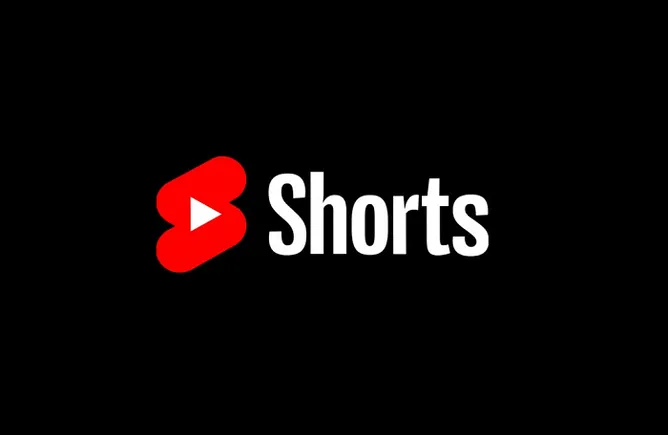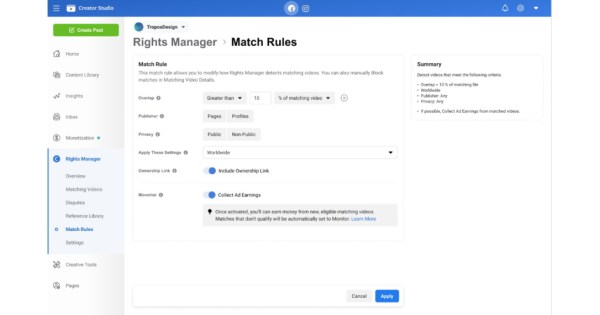Ever since creators like PewDiePie and Zoella broke the internet with their huge YouTube earnings, people have been curious about just how much money YouTubers actually make. On average, a YouTuber earns around $0.018 for each view, which amounts to $18 for every 1,000 views.
However, this figure isn’t set in stone. The earning potential differs across niches, geographical regions, and account sizes.
Daily Video Views
Drag the slider to calculate potential earnings
20,000 Views/Day
Average Engagement Rate
Estimated Daily Earnings
$28.50 – $47.50
Estimated Monthly Earnings
$855 – $1,425
Projected Yearly Earnings
$10,403 – $17,338
The below provides a guide to How Much YouTubers actually Make:
As of August 2024, the typical compensation for YouTube content creators in the United States is approximately $120,226 per year. That translates to $57.80 per hour, $2,312 per week, and $10,018 per month.
Content creators receive approximately 55% of the revenue generated on their channels, which means that for every $100 an advertiser spends, Google pays $55 to the creator.
In our post, How to Make Money on YouTube, we discussed how people make money on YouTube. However, just how much do they make? Well here’s a Youtube Earnings Estimator you can give a spin to find out how much Youtubers make exactly.
How Much Money Can You Make on YouTube?
Earnings on YouTube can vary widely depending on factors like audience size, engagement, and the monetization strategies used. While top creators can earn millions annually, even smaller channels have the potential to generate a significant income. Here’s a breakdown of how much you can make:
Ad Revenue: Average CPM ranges from $2 to $10 (although it depends on the industry), with creators keeping 55% of the revenue.
Sponsorships: Brands typically pay $10 to $30 per 1,000 views for sponsored content.
Merchandise Sales: Selling branded products can add thousands of dollars to your monthly income.
Affiliate Marketing: Commission rates range from 5% to 50% per sale.
Super Chats & Memberships: Additional income streams during live streams and through channel memberships, with YouTube taking a 30% cut.
Youtube Money Calculator
Estimated Total Earnings by Channel
Import YouTube User (Channel URL)
Number of total Subscribers
0
Number of Total Video Views
0
Total estimated earnings
$0
Average Earnings per Video
$0
How to Use the YouTube Earnings Calculator?
The YouTube Earnings Calculator estimates your daily, monthly, and yearly earnings based on your daily video videos. You can move the slider right or left to adjust the estimated number of daily views and average engagement rate. Based on this, your potential earnings will be displayed.
For example, if you get 25,000 views per day and your average engagement rate is 20%, according to our calculator, you can earn $208 to $347 per month and $2,535 to $4,225 per year.
YouTube money calculator
As the engagement rate increases, so do your earnings. For example, at 40% engagement, your annual earnings increase to anywhere from $12,607 to $21,011. Similarly, if your daily video views increase, you’ll see a significant increase in your earnings.
YouTube money calculator
However, our calculator is not the official source for determining your earnings on YouTube. It’s simply a tool that gives you an estimate based on certain assumptions. In reality, the amount of money a content creator can make on YouTube varies greatly and is dependent on various factors such as niche, audience demographics, engagement rate, income streams, and personal brand.
How Much Does YouTube Pay Based on Your Channel’s Growth Stage?
You are unlikely to be earning anything as you place your first video on YouTube. You are a video fledgling, and certainly a long way from being considered an influencer.
He is now so famous that people make videos interviewing PewDiePie’s early subscribers, about whether they feel famous. Back in the beginning, he was still making niche videos in Swedish.
Depending on where your YouTube channel is at in terms of growth, your earnings can vary. Generally, content creators with a large following and steady viewership can earn more through ads and sponsorships compared to smaller channels.
Here’s a breakdown of how much YouTube pays based on different channel sizes.
How Much Do YouTubers Make With 1,000 to 10,000 Subscribers?
In theory, you can monetize your YouTube account if you meet the following requirements:
At least 1,000 subscribers and 4,000 watch hours in the past 12 months
OR
At least 1,000 subscribers with 10 million public Shorts views within the past 90 days
However, in practice, you are unlikely to make any real money until you have built up traffic to your site – and by that, I mean genuine traffic from people who watch your videos, not by taking the shortcut method of paying for views.
We looked at a Reddit thread to hear from YouTubers in different niches how much they earn on average for 1,000 to 10,000 subscribers. According to a YouTuber in the automotive niche, they make £500-700 or $640 to $900 per month with 12,500 subscribers. In the same thread, another YouTuber in the same niche said that they make the same amount at 4,300 subscribers because they get a daily watch time of over 50 hours compared to the previous YouTuber’s 6 to 7 hours.
Another YouTuber in the tabletop gaming niche reported making around $725 per month with 400k (200k of them Shorts) views and 6,000 subscribers. Some niches, such as self-improvement and money-making, are more profitable. A YouTuber in this niche reported making $1,000 a month with 10,000 subscribers.
However, it’s not just the niche and the number of subscribers that affect your income. Your audience demographics also play a role. According to a YouTuber with 15,000 subscribers, they make $3 a day with 5,000 views because most of their viewers are from Pakistan, Bangladesh, and India. That’s less than $100 a month compared to their counterparts who get views from Canada and the UK.
YouTube Income Per 1,000 Views
On average, YouTube pays $5 to $6 per view, although the value can be higher or lower, depending on the creator’s niche, audience, video length, and country. Forbes has previously reported that YouTubers make $5 per 1,000 views on average.
However, the actual earnings of a YouTuber depend on their revenue per mille (RPM), which is impacted by the following factors:
Country: If your viewers come from a high-spending and high-paying country like the US, Canada, or the UK, your RPM will be higher. Advertisers are willing to pay more to reach audiences in these countries. On the contrary, ad prices are lower for audiences from developing countries.
Ads: Shorter videos have fewer ads because of less room. So, the revenue per 1,000 views can be lower. However, the length of your video is not as significant as you may think. Short videos can have high RPM if they’re highly engaging and get a lot of clicks on ads.
Niche: Ad prices in certain niches like finance and business services are higher compared to niches like entertainment and vlogging. So, creators from such niches make more money per 1,000 views.
For example, Josh Winiarski, a YouTuber in the photography niche, earns $4.48 per 1,000 views on his channel. In comparison, Joshua Mayo, a YouTuber who makes videos about passive income, side hustles, and money management, earns $21.20 per 1,000 views.
How to Make Money As a Beginner on YouTube?
Although there are some adverts that are CPM (cost per thousand views), many are CPC (cost per click). For you to earn anything from a CPC ad, you need a viewer to click on the ad. In reality, only a small percentage of your viewers will click on the ads surrounding your videos. Even the CPM ads in the video itself require more than just a cursory glance.
For it to be counted for payment, a viewer must watch it for at least 30 seconds (or half the ad for a very short video). Think how many people skip past the ad at the start of a video, thus wiping out any chance of payment to the channel. If viewers do click on or view your ads for long enough to earn income, you share any advertising revenue with YouTube. You will only get paid once your AdSense account reaches $100.
YouTube pays its creators by the 21st or 26th of each month if their balance meets the payment threshold. For example, if you reach the $100 threshold in June, YouTube will issue your payment by July 26 at the latest.
In your channel’s early days, you are building up a reputation rather than an income.
One area where you might start to make money with a relatively small number of subscribers is if you pick a popular topic and participate in affiliate marketing. For instance, if your videos review a popular type of product, and you link to an affiliate sales page for that product you may begin to earn money that way.
For a rough idea of how much Youtubers make use the earnings estimator below and import the user’s Youtube channel.
Of course, some niches are easier than others to make money in, so if you are hoping to one day live off your channel’s proceeds it would probably help if you created your channel on a topic that interests people. Probably the most successful niche is gaming. Let’s face it, gaming is a huge industry in itself, and many gamers have reasonable levels of discretionary income to spend. Other successful niches include:
Gaming
Funny Videos and Random Videos
Music Videos
Autonomous Sensory Meridian Response (ASMR)
Educational Content
Life Hacks
Personal Finance
Lifestyle
Fashion and Try-On Hauls
Software Reviews
Making Money Online
Tech, Cars, and Gadgets
Makeup Tutorials
Fitness and Bodybuilding
Home Improvement
Cooking
How Much Do YouTubers Make With 10,000 to 100,000 Subscribers?
On average, YouTubers with 100,000 subscribers can make between $5,000 and $15,000 per month. For many, the average AdSense earning is $1,800 per week. Brand deals, sponsorships, and merchandise sales are on top of that.
YouTubers with around 10,000 subscribers make anywhere from $500 to $1,500 per month through AdSense. But if you account for brand sponsorships, a single video can earn more than $1,000.
The actual amount a YouTuber makes with 10,000 to 100,000 subscribers varies wildly depending on the factors we discussed earlier. Hearing from actual YouTubers, it seems the average is under $1,000 for accounts with a little over 10,000 subscribers.
Tom Storey, a real estate YouTuber, revealed in a video that he makes $3,137 per year or around $260 per month from AdSense with 14.2k subscribers. However, he also has other income streams to supplement his earnings.
We also found some earning reports from different channels with various subscriber counts through another Reddit thread. A channel that mainly gets Indian viewers makes $1,000 a month with 50k subs. Another with 20k subs makes $3,400 per month in the anime niche.
How Much Does YouTube Pay For 1 Million Views?
According to our earlier observation, on average, YouTube pays $0.018 for each view, which translates to $18 for every 1,000 views or $18,000 for one million views. However, this figure differs based on the type of ads and the location of the viewers. Most YouTubers’ earnings range between $1,000 and $5,000 for every one million views.
According to a YouTuber in the finance and investment banking niche, they earned around $5,700 to $6,100 per million views on their channel. However, note that finance-related videos tend to attract higher bids for ads compared to other niches. That’s why another YouTuber reported earning $2,000 to $3,000 per million views for their channel.
However, you don’t necessarily need a million views to make this much money if you’re in a high-earning niche and get viewers from ‘’rich’’ countries. Griffin Milks, a personal finance YouTuber, told Business Insider that he makes around $1,300 to $5,500 for under 200,000 views. That means he must earn quite a lot with a million views.
About 114,000 views: $1,900
About 117,000 views: $1,300
About 150,000 views: $2,100
About 175,000 views: $5,500
How to Make Money As a Mid-Sized Account on YouTube?
With enough perseverance, not to mention on-camera talent, you should eventually pull yourself out of YouTube’s graveyard of poor performers. You should by this point be receiving some AdSense revenue every month, with affiliate marketing income too if you have chosen to go down that track.
However, at this stage, you are still mainly producing videos for love, with some other source of income paying your daily survival bills. By now you could be considered a minor influencer in your particular niche. You could use this influence to your advantage and add Patreon as an income stream.
There isn’t a required minimum number of subscribers on YouTube if you wish to establish your own paid membership on Patreon. The average Patreon contributor donates $7, with Patreon keeping varies from 5% to 12% depending on the plan you pick. There is an additional payment processing fee of 2.9% + $0.30 for donations over $3. 5% + $0.10 for donations of $3 or less.
It must be remembered, however, that if you are uploading videos on a regular basis, you are likely to receive recurring payments from your Patreon supporters. One example is The Comedy Button which currently has 601 patrons paying them $2K – $4K per month. This is a YouTube channel that has around 21,300 subscribers.
Once mid-sized channels begin to recognize success, they should be looking to do more with their AdWords, for instance deliberately chasing phrases with a relatively high cost per click (CPC). If they are a review channel, for instance, you could focus on reviewing products that attract ads with a higher CPC.
By now they could be famous enough for smaller brands to be asking the channel to endorse their products. Yet, these channels are still small, by YouTube’s standards, so income earned from sponsorship and product placement will still not be enough for the channel holders to live off.
Indeed, as Gaby Dunn writes about on Fusion, the middle years of a YouTube channel’s life are often the most difficult. The channel owners often need to work full time creating video content, but people only see them as mildly influential, and the channels certainly aren’t generating a full-time income.
Dunn operates a channel with a friend, Just Between Us. You would think that would be enough to ensure financial survival. Yet, Dunn says that “despite this success, we’re just barely scraping by…but it’s not enough to live, and its influx is unpredictable. Our channel exists in that YouTube no-man’s-land: “Brands think we’re too small to sponsor, but fans think we’re too big for donations.”
Of course, it depends on who your audience is. One issue faced by quite a few YouTubers is that their supporters are naturally anti-establishment, anti-capitalist, and anti the idea that their YouTube heroes might be selling themselves out.
Other types of channels, such as the review channels, the gaming channels, and of course anything business-related have it easier. Their fans expect these channels to make money, so don’t resist helping them out.
How Much Do YouTubers Make With 100,000 to 1 Million Subscribers?
YouTubers with larger accounts can expect to earn in the range of $10,000 to $20,000 per month from AdSense alone. However, as mentioned before, this is just one source of income for YouTubers. Brand deals and merchandise sales can bring in additional thousands of dollars each month.
In a Reddit thread, a YouTuber reported making $350k per year with 200k subscribers through AdSense and memberships. This earning does not include sponsors.
Another YouTuber with over 500k subscribers reported making $4,500 per month with AdSense. They also made $5,500 per month with sponsors, bringing the total monthly income to $10,000.
How Much Does YouTube Pay For Over 1 Million Views?
According to our calculator, if you get 12.14 million views per year, or around 1 million views per month, your AdSense earnings can range between $3,300 and $5,600. Again, these are just from AdSense. You can definitely earn more through sponsors and merch sales.
YouTube money calculator
For 18 million views a year or 1.5 million views per month, you can make anywhere between $5,000 and $8,400 per month.
How to Make Money As a Big Account on YouTube?
Once a YouTube channel’s subscriber-count reaches the millions, life becomes easier for the owners. These channels are beginning to find fame and begin to become recognized as being influential in their niche.
1,000,000 subscribers sounds quite a few, but these channels are still not in elite company. There are now approximately 25,000 to 30,000 channels in the 1,000,000 + club. Some of these are official channels for offline superstars, particularly official music channels for the likes of Justin Bieber and Rihanna, but quite a few are simply everyday people who have built themselves a YouTube following.
Once you have a following of this size, you have the traffic to earn good money.
Google pays out 68% of their AdSense revenue, so for every $100 an advertiser pays, Google pays $68 to the publisher. The actual rates an advertiser pays varies, usually between $0.10 to $0.30 per view, but averages out at $0.018 per view. Around 15% of viewers on average watch the requisite 30 seconds of a video ad to count for payment.
This means that for 1,000 views, 150 people are likely to watch an ad. At $0.018 per view, Google will charge the advertiser $27, keeping 32% ($9) themselves. The YouTube channel will receive $18 per 1,000 views.
Obviously, it is important for a channel to keep coming up with new videos, at least one to two videos per week. If a channel were able to get its entire fanbase of 1,000,000 to watch two new videos per week it would receive each week: $18 x 1,000 x 2 = $36,000 per week from AdSense alone.
Clearly, by this level a channel is also likely to have sponsorship opportunities, endorsements, and product placements. Many of these YouTube stars will also be well enough known that they can merchandise products to their fanbase, Any review-type channels of this size will often make good money with affiliate marketing, even if they are only tied in with Amazon, and their comparatively low 1 – 20% advertising payment rates to affiliates.
How Much Do YouTubers Make With Over 1 Million Subscribers?
Then there are the true stars of YouTube, some of whom receive a stellar income from their activities on the social network.
It is impossible to source exact incomes on YouTube – there are too many variables and undisclosed figures. However, there are plenty of websites that provide a “best guess” of the incomes earned by the leading YouTube channels. It was perhaps inevitable for someone with a name like MrBeast to achieve the level of success he has now attained.
Currently, MrBeast holds the top spot in terms of earnings, while Jake Paul ranks second despite previous controversies.
According to some sources, MrBest makes between $3 and $5 million per month through paid sponsorships and ad revenue. However, CNBC reports that Mr Best brings in $700 million per year. In his interview with the Time Magazine, he reported that brands pay him anywhere from $2.5 million to $3 million for a shout-out.
Another YouTuber with over 1 million subscribers told Business Insider that he made $50,000 in a single month. So, once you get over the 1 million mark, you’re set to make the big bucks.
How Do YouTubers Earn Money: YouTube Revenue Streams
AdSense or YouTube’s monetization program is not the only way YouTubers earn money. In fact, many successful YouTubers have multiple sources of income. Here are some of the most common ones.
YouTube Partner Program
The YouTube Partner Program is the most common revenue stream for YouTubers. This program allows YouTubers to earn money from ads that are placed on their videos.
Once you become eligible for the program, you can start earning money through AdSense. Advertisers place bids on your videos, and you earn a percentage of that bid when someone views or clicks on the ad. The exact amount you earn depends on various factors such as the number of views, type of ads, viewer demographics, etc.
However, don’t simply rely on AdSense as your source of income since it won’t be a lot. Google takes 45% of the ad revenue, and the rest goes to the YouTuber. So, you’re only getting a small percentage of the overall ad revenue.
Affiliate Links
Another way to earn money as a YouTuber is through affiliate links. You can sign up for high-commission affiliate programs, promote products relevant to your audience, and earn a commission for every sale made through your link.
The amount you earn through affiliate links will depend on your audience size and engagement. Affiliate earnings also vary from one month to another based on how many sales you make. For example, a YouTuber with 42k subscribers reported that they made $9,000 one month through affiliate links. However, that’s not a consistent amount, and it can fluctuate.
Another YouTuber said they make $75 to $100 per month with 80k monthly views.
Merchandise
Many YouTubers sell merchandise such as t-shirts, mugs, phone cases, etc., with their brand logo or catchphrase on them.
Take the Philosophy Tube as an example. Abigail, the creator behind the channel, makes videos about sociopolitical issues and philosophical concepts. Being a trans woman, her merch is inspired by trans slogans, which appeal to her audience.
Your merch earnings depend on the number of views and their engagement levels. If they really like you and your content, they’re more likely to buy merchandise, especially if it has a personal touch.
On average, a creator getting 5,000 views per month can expect to make $170 to $870 per month. If you get 50,000 views per month, your merch sales can bring in $730 to $3,500 per month. Similarly, for a million views, you can make upward of $4,000 in merch sales.
Brand Sponsorships
YouTubers typically make the most of their earnings through brand sponsorships. Companies in your niche will reach out to you and offer to sponsor a video. You can choose to either integrate their product/service into your content or make a dedicated video about it. Either way, you get paid based on the popularity of your niche and the engagement level of your audience.
Depending on your niche, you can also run brand campaigns on other platforms simultaneously. For example, Roberto Blake, a tech and business YouTuber, charges $1,000 for a sponsored LinkedIn post. For a year-long campaign, which involves YouTube videos and creatives for other social media platforms, he charges up to $30,000.
Channel Memberships
YouTube also offers a feature called Channel Memberships, where viewers can set up recurring monthly payments to support their favorite creators in return for members-only perks like emojis and badges.
You can also earn through YouTube’s Super Chat, which allows viewers to pay to have their messages highlighted during a live stream. You can set up a tipping jar for your audience to donate an amount of their choice during live streams. Another similar feature is Super Stickers. Viewers send animated stickers to show their support during a live stream, and a portion of the revenue goes to the creator.
Your audience can also show their gratitude through Super Thanks on a Short or a long-form video. They pay for the one-time animation, which is shown to them over the top of your video. Plus, they get to post a colorful and customizable comment on the video.
Outside YouTube, you can set up a Patreon account to offer exclusive content and benefits to paying members. We’ve already discussed how Patreon can help you make money once you become a mid-sized account. Check out our guide to find Patreon benefits you can offer your patrons.
Coaching and Digital Products
If you’re an expert in something, you can offer coaching or consulting services to your YouTube audience. For example, as a marketer, you can offer one-on-one coaching sessions on how to grow a YouTube channel or promote products through influencer marketing.
Silicon Valley Girl does this wonderfully on her YouTube channel. She has a link to book a 1-1 consultation with her or her YouTube team in every video she posts. Plus, she adds affiliate links to investment apps and high-yield savings accounts to further boost her earnings.
YouTubers in less technical fields can also sell digital products. For example, as a cooking channel, you can sell a digital cookbook. A travel vlogger can sell a digital photography course. There are a ton of options. Learn how to sell digital goods online from our detailed guide.
Own Business
Once you have a decent following, you can start looking at these people as your potential customers and not just viewers. Many YouTubers start an eCommerce business after getting a substantial following.
For example, Cassey Ho, a YouTuber with millions of subscribers, started her own brand called Blogilates, which sells fitness apparel and accessories. Similarly, Rosanna Pansino, a hotshot baker on YouTube, started her own baking line called Nerdy Nummies. She sells baking products, cookbooks, and more.
You can take inspiration from these successful YouTubers and create your own brand or product line. If you don’t have the means to do it alone, you can work with a brand or a fellow YouTuber.
For example, Jeffree Star and Shane Dawson collaborated to create the infamous Conspiracy eye shadow palette in collaboration with Morphe, a makeup brand. Although the palette was later removed from the brand’s website due to certain allegations about the duo, it was a huge success while it lasted, with a million palettes being sold in just 30 minutes.
Which Factors Impact YouTube Earnings?
The earning potential of a YouTube channel depends on various factors. Here are some of them.
Video Length
The length of your video determines how many ads can be played on it. A longer video has more ad breaks, which means more potential ad revenue. Longer videos also allow for mid-roll ads, which have a higher payout compared to pre-roll ads.
Natalie Barbu, a YouTuber, says,
“I make all of my videos over 10 minutes long because I feel like if not, it’s a wasted opportunity. My average viewer retention is around four or five minutes. I’ll always try to place an ad before then around the three-minute mark because I want most people to watch that second ad.”
Placing multiple ads is only possible if you make longer videos.
However, that does not mean that you should make unnecessarily long videos with low-quality content. Viewers will click off if they feel like the video is dragging on without any substantial information.
We have a Step-by-Step Guide to Creating Successful YouTube Ads you can check out.
Ad Quality
High-quality ads, such as those from premium advertisers, have a higher payout compared to lower-quality ads. These ads are usually targeted toward a specific audience and are related to costly products and services. Since YouTube earns more for these ads, you do, too. Conversely, lower-quality ads, such as those from smaller companies or with a lower relevance to your audience, have a lower payout.
The ad placement also matters. Pre-roll (beginning of the video) and mid-roll (during the video) ads have higher payouts since the audience is most engaged during these times. Ads placed at the end of the video (post-roll) have lower engagement and, thus, a lower payout.
Also, check out our YouTube Ad Size and Specification Guide to know how your ads should look like.
Number of Views
This one’s pretty obvious: the more views your videos get, the more you earn. Just to be clear, YouTube won’t pay you for every view your video receives. Instead, they pay based on the number of views that generated ad revenue.
With more views comes more potential for ad impressions, ultimately translating to more earnings. We recommend using all YouTube features to increase video views, such as YouTube Studio, video descriptions, end screens, feature videos, playlists, etc.
Number of Ad Clicks
The whole point of advertisers running ads on YouTube is for viewers to click on them and buy the products or services. So, the more clicks the ads on your videos get, the higher your earnings.
You can’t force your viewers to click on ads or watch them till the end, though. Instead, just create high-quality videos that attract a ton of viewers so that there’s a higher likelihood of a chunk of them clicking on the ads.
Check out our YouTube video ideas for inspiration.
Who Are the Top Earning YouTubers?
While some YouTubers discuss their earnings in interviews, their net worth often remains a mystery. However, according to Forbes, the top 10 highest-paid YouTube stars are as follows.
YouTube ad revenue, sponsorships, merchandise sales (Beast Merch), MrBeast Burger
YouTube ad revenue, boxing matches, merchandise (Team 10), brand endorsements, music career
YouTube ad revenue, sponsored videos, merchandise sales, Cloak clothing line
YouTube ad revenue, sponsorships, merchandise sales, book deal, Mythical Entertainment, Wonderhole comedy series
YouTube ad revenue, merchandise sales, sponsorships, brand deals
YouTube ad revenue, sponsorships, toy line with Jazwares
YouTube ad revenue, brand deals, merchandise (toys and clothes with Walmart and Target), upcoming children’s movie
YouTube ad revenue, sponsorships, merchandise sales, live tours, mobile app, investment from Highmount Capital for future ventures
YouTube ad revenue, sponsorships, merchandise sales, podcast sponsorships, NFT projects
YouTube ad revenue, merchandise sales, brand deals, gaming servers
1. MrBeast – $54 Million
MrBeast, known for his over-the-top challenge videos and philanthropy, creates content that often involves large sums of money, extreme stunts, and giveaways. His income comes from YouTube ad revenue, sponsorships, merchandise sales (Beast Merch), and his own food brand, MrBeast Burger.
2. Jake Paul – $45 Million
Jake Paul’s controversial content and boxing matches have brought him massive success on YouTube. Along with his own merchandise line, Team 10, and music career, he also earns through brand endorsements.
3. Markiplier – $38 Million
Mostly known for his gaming content, Markiplier has diversified his income through sponsored videos and merchandise sales. He also has a clothing line called Cloak, co-founded with fellow YouTuber Jacksepticeye.
4. Rhett & Link – $30 Million
Rhett & Link, the comedy duo behind Good Mythical Morning and other YouTube channels, has earned their income through sponsorships, merchandise sales, a book deal, and a production company called Mythical Entertainment. They are also set to launch a YouTube comedy series called “Wonderhole” in August 2024, which will help increase their income.
5. Unspeakable – $28.5 Million
Unspeakable, also known as Nathan, creates family-friendly content that mainly revolves around gaming and challenges. He also has a successful merchandise line and earns through sponsorships and brand deals.
6. Like Nastya – $28.1 Million
Anastasia Radzinskaya, the 10-year-old YouTuber, has gained fame through her toy reviews and vlogs. Along with ad revenue, she earns from sponsorships and her own line of toys with Jazwares.
7. Ryan Kaji (Ryan’s World) – $27 Million
Ryan Kaji earns through brand deals, ad revenue, and a line of toys and clothes with Walmart and Target. The kid YouTuber is also set to release a children’s movie across 2,000 screens in the US, which will surely add to his already impressive earnings.
8. Dude Perfect – $20 Million
Dude Perfect is known for their trick shots, sports-related challenges, and comedy skits. They earn through sponsorships, merchandise sales, live tours, and their mobile app. The group has recently gotten over a $100 million investment from Highmount Capital, which they’ll use to introduce a line of games and toys at Walmart. A theme park, a streaming platform, and a retail store may also be in the works.
9. Logan Paul – $18 Million
Like his brother Jake, Logan Paul is also a popular YouTuber known for his vlogs and stunts. He earns through sponsorships, merchandise sales, podcast sponsorships, and NFT projects.
10. Preston – $16 Million
Preston, commonly known as PrestonPlayz, creates gaming content, mainly focused on Minecraft. His income comes from a merch line, brand deals, ad revenue, and gaming servers.
Wrapping Up
Summing up, YouTube can be a real money-maker if you put in the effort and creativity. While YouTube’s Partner Program may not be enough to get to six-digit earnings, there are plenty of additional streams of income for YouTubers to explore. Sponsorships, coaching, merchandise, and affiliate marketing are some of them.
As for how much you can earn through YouTube, the answer differs across niches and creators. If you have a highly engaged audience, you can explore pretty much every avenue, from multi-million brand deals to selling your products.
Frequently Asked Questions
Who are the highest-earning YouTubers?
Some of the highest-earning YouTubers are Mr Best, Jake Paul, Markiplier, Like Nastya, Unspeakable, and Ryan Kaji.
How do YouTubers get paid?
YouTubers get paid through the platform for their YouTube Partner Program earnings, which are based on ad revenue from their videos. The platform pays every 21st or 26th of the month. For brand deals, YouTubers get paid through external channels.
How much does a YouTuber with a million subscribers make?
A YouTuber with a million subscribers can make anywhere from $10,000 to $100,000 per year. However, this figure is highly dependent on the type of content and engagement rate.
How much does a YouTuber with 100k subscribers make?
The average income for a YouTuber with 100k subscribers can range from $5,000 to $15,000 per month. They can supplement their AdSense earnings with other income streams like affiliate marketing, merchandise sales, and sponsorships.
How much does YouTube pay for 1 million views?
Based on the calculation of $0.018 per view, YouTube can pay around $18,000 for 1 million views. However, this figure is an estimate and may be lower depending on the type of ads, video length, audience demographics, and other factors.
Do YouTubers get paid monthly?
YouTubers get paid on a monthly basis, but they need to hit the $100 threshold to receive their payment. Once they reach the threshold, the platform pays them every 21st or 26th of the month. For example, if you reach $100 in March, you’ll receive your payment on April 21st or 26th.
How much does a small YouTuber make?
Small YouTubers, or those with less than 10,000 subscribers, typically make very little from AdSense revenue alone. However, they can still earn money through other streams like sponsorships. Depending on their niche and income streams, it’s possible for small YouTubers to make a few hundred to $1,000 per month.
How much do average YouTubers make?
According to our calculations, YouTubers make $0.018 per view or $18 per 1,000 views. At 50,000 views per year, an average YouTuber can potentially make around $900 per year. Zip Recruiter reports that an average YouTube channel in the US makes $68,714 a year.
Does YouTube pay for Shorts?
Youtubers in the YouTube Partner Program get paid for shorts, but the payment is lower than for regular videos. YouTube pays around $0.03 to $0.07 per 1,000 views for Shorts. For a million views, this only equals anywhere from $30 to $70.
How hard is it to monetize YouTube?
You need at least 4,000 watch hours and 1,000 subscribers in the past 12 months to be eligible for monetization on YouTube. While this milestone may seem daunting, it’s not impossible to achieve. Just be consistent with posting and build a community around your channel.
About the Author
Writer
The Influencer Marketing Hub Team brings together a diverse group of experts with a passion for influencer marketing, digital trends, and social media strategies. Each piece of content crafted by this team is researched and written to provide valuable insights, tips, and updates for our readers. Our authors are dedicated to delivering high-quality, informative, and engaging articles that help businesses and influencers thrive in this rapidly changing digital world.









